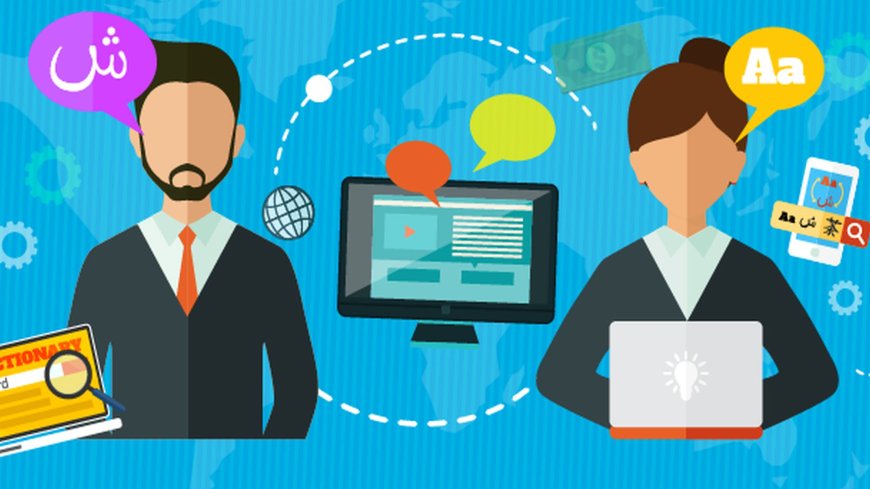How to become a translator
How to Become a Translator: 7 Steps to Your Dream Job. No matter which language you choose to study, with the right skills and qualifications, you can find a job as an interpreter between that language and your native language.

How to Become a Translator: 7 Steps to Your Dream Job
No matter which language you choose to study, with the right skills and qualifications, you can find a job as an interpreter between that language and your native language.
Maybe your dream is to work as a freelance translator at a nearby coffee shop.
Or maybe you enjoy doing regular translation work for an employer or agency, or maybe even the government.
So, if you're dreaming of a career as a translator, follow these seven steps to land your dream job.
Content
What do translators do?
7 steps to become a translator
1. Comprehensively study the source language.
2. Get special training.
3. Get certified.
4. Choose a specific industry and study industry terms.
5. Hone your computer skills.
6. Get work experience.
7. For further career growth, learn several languages.
What do translators do?
From a technical point of view, interpretation and translation are two different professions. Although both professions require knowledge of at least one additional language, interpreting is oral and written is written, so the work of an interpreter is focused on translating a written text from one language to another.
Translators usually translate from the source language into their native language. Although a translator may fully understand the source language and even be able to write well in it, writing in the native language is usually easier and the text is smoother and more natural.
Translators work in a wide variety of industries - from public administration to medicine, business, education and everything else. An interpreter may be needed in any industry where the language is used.
Translators often work freelance or run their own businesses. However, others work for agencies or even directly for a single employer. This gives translators some flexibility as to whether they want to have a full-time job or prefer to plan their own schedule.
7 steps to become a translator
1. Comprehensively study the source language.
First of all, you need to choose a language and study it carefully.
There is a job as a translator in just about every living language, and there are arguments for learning just about any language you can name. Naturally, more translation work is available for the most common languages.
However, since more people know these languages, the competition for jobs is also higher. While there may be less work for less common languages, knowing one of them can set you apart from the crowd and give you access to work that fewer people can do.
To choose a language, you can explore what vacancies exist.
How to Become a Translator To do this, you can view current Translator job postings on Indeed. If you are interested in a particular area, you can also learn the languages that are most commonly used in this area.
For example, if you are interested in diplomatic or international work, the official languages of the United Nations (English, Arabic, Chinese, French, Russian and Spanish) may be of use to you.
Once you have chosen a language, you will need to learn it to a high degree of fluency. It is useful to learn a language in college, as well as study abroad or live abroad.
A university degree in source language of translation can further set you apart from others. The more language experience and education you have, the better.
words, decks of flash cards and interactive transcripts. Each flashcard shows you other videos in which the word occurs in the same context.
You can practice with the program by turning off English subtitles and either not using subtitles at all or leaving subtitles in the target language. Listen and translate, then watch the video again with English subtitles turned on to see how well you did.
There are also several translation exercises in the quizzes that follow each video, and conversational questions in the iOS and Android apps that allow you to speak your answers to certain questions out loud to practice speaking.
2. Get specialized training.
The fact is that even if you are fluent in the language, this does not mean that you have translation skills.
In order to provide a clear and effective translation, special training is often required in addition to learning the language.
3. Get certified.
How to Become a Translator A certification in translation is an easy way to show that you have the skills needed to get the job done.
ATA offers a certification that gives you a special designation (CT) that you can use with your name on your resume, website, business cards, and/or other promotional materials.
How to become a translator. In addition, there are industry certifications, although these are often geared towards interpreters. For example, the National Council for the Certification of Medical Interpreters offers the CMI (Certified Medical Interpreter) certification.
However, getting certified as an interpreter in a particular field can show that you know a lot about the language used in that context, so it can also help you get a job as an interpreter.
Another possibility is to obtain certifications in a field unrelated to the language in which you are interested in translating. For example, earning a paralegal certification can help you land a job as an interpreter in the legal field by showing that you understand the industry. Similarly, a registered nurse can help you get a job as a medical translator.
4. Choose a specific industry and study industry terms.
Once you're fluent in the language, you'll also want to learn industry-specific terms for the industry you want to work in.
Just fluency in the language does not always allow you to get the terminology necessary for translation, so you will have to pay extra attention to industry terminology.
For example, you can study words that are especially needed in medicine, business, government, or education. There are several ways to do this.
You can find a course or learning resource dedicated to a specific area. For example, there are many courses and resources available in Medical Spanish.
You can take a self-paced online course or study a related book, such as Spanish for Medical Professionals.
If you are already familiar with your area of interest, you can make a list of important terms in English. You can then find and study the equivalent vocabulary words in the language you want to translate from.
How to Become a Translator If you want to study one-on-one, in a personalized way, you may want to find a tutor who can help you. Some language courses, such as Cactus Language Training and ALTA Language Services, offer personalized tuition based on client needs, so they can tailor a more specialized vocabulary course for you.
5. Sharpen your computer skills.
Many types of translation require the use of special computer programs. This is done in order to make the translation process faster and more efficient. Professional translators use the following programs, which you should familiarize yourself with:
Memsource
word fast
memoQ
SDL Trados Studio
The linked websites can give you a brief idea of the features and interface of these programs. You may also want to consider a subscription to get more first-hand experience with the programs.
6. Gain experience.
One of the cruel ironies of translation and most other fields is that you already need experience in the field to get most jobs, and the puzzle then becomes: how do you get that experience in the first place?
How to become a translator The answer to this question is simpler than it seems. Contract work or freelancing is an easy way to gain experience and add it to your resume. Your first few orders may not pay as well as you would like, but as you gain experience, you will be able to get more and more compensation for your services.
7. Learn more languages for further career advancement.
If you want to make yourself even more marketable, you can learn multiple languages that you can translate from to expand your range of services.
Let's say you are fluent in Chinese and can translate from Chinese to English. However, what if you could add Spanish to it? Now you can translate from Spanish to English or from Chinese to English.
Eventually, you may even be able to translate into Chinese and/or Spanish, thereby increasing your potential for translation and improving your ability to work. How do you like this career growth?
Fulfill your dream - become a translator.
By following these tips, you will be able to turn this dream into a success.
What's Your Reaction?



























































